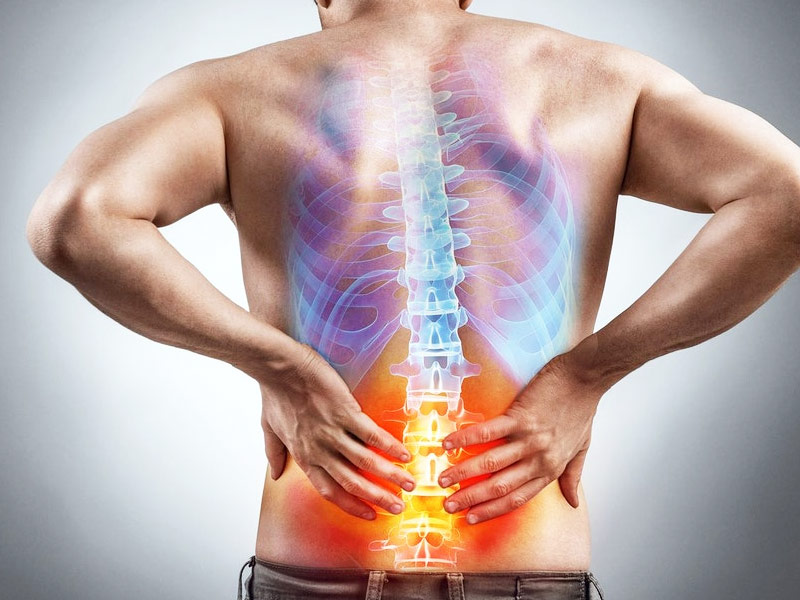
Every human being on this planet is living on a particular structure. This structure is present in our body in the form of bones. We many a times ignore the health of our bones which are soul of our body. Whenever we have muscle pain we take medicines or take rest and give them time to heal. On the same hand we neglect the health of our bones and do not give much importance it until something serious happens. You may have heard of osteoporosis which is a bone disease but there is also an initial stage called Osteopenia. Let us know the difference between them and importance of Osteopenia.
Table of Content:-
Osteopenia Vs Osteoporosis
Both osteopenia and osteoporosis are similar health issues concerning bones. However one is considered a disease and the other one is not. Osteoporosis is a bone disease which occurs when the body looses on too much bone. This results in making the bone weak and prone to fracture, break, stooped posture, pain or serious damage to bones.
Osteopenia is also connected to bone density, it happens when the BMD is lower than usual and it starts decreasing somewhere around the age of 35. Normal bone density of a person is highest at 35 years but in some cases due to wrong posture, exercises, genetic reasons or low estrogenic level it decreases significantly at a young age. It increases the chances of having osteoporosis. Though in most of the cases of osteopenia arise after age of 45-50 years which is common.

What Are the Causes of Osteopenia?
Bones can be very complicated to understand sometimes hence our expert Dr. Narayan Jindal, Junior Orthopaedist at AIIMS Delhi helped us out in understanding the cause of Osteopenia. Sometimes bones get old quicker than their normal age and it is a natural process. There are chances that osteopenia can happen due to lower estrogens in the body, some genetic history, not getting enough exercise, smoking or drinking too much alcohol.
Normally females are more prone to osteopenia than males because of menopause, removal of ovaries and lower oestrogen levels. It is also observed that female bones are slightly thinner than a male which is also a major cause of having more female cases of osteopenia.
The difference between osteoporosis and osteopenia can also be understood by a chart. If there a slope for bone density where normal bone density is the highest point and osteoporosis remains at the lowest. People with osteopenia will come somewhere between the two. Osteopenia increases the risk of bone disease but has a major scale for improvement.
Also Read-What Are 'Man Boobs'? Know The Cause, Treatment and Tips To Avoid This Condition
Factors Affecting Towards Osteopenia
- Hereditary or history of BMD in family
- Being older than 50 years of age
- Females in Asian region
- Menopause before age of 45
- Not getting enough exercise
- Removal of ovaries before menopause
- Poor diet and lack of nutrition
- Smoking
- Usage of tobacco or drug abuse
- Drinking too much alcohol or caffeine
Treatment of Osteopenia
Since osteopenia is not a disease therefore there it involves number of different measures which can control osteopenia from progressing. It includes diet, exercise and supplements to improve your bone density.
1. Supplements for osteopenia are given to increase BMD. It is provided by health specialist which is mostly calcium and vitamin D supplements.

2. Diet: We all know bones are made up of calcium; therefore diet for treating osteopenia includes food items which are rich in calcium and vitamin D. It is recommended to have dairy product such as cheese, milk and yogurt. Orange juice, bread and cereals can also fulfil the need to calcium and vitamin D. However there are some other food products which can be very beneficial including
- Dried beans
- Broccoli
- Wild fresh water salmon
- Spinach
3. Exercises: Doctor may also recommend some exercises especially for bones. Small increase in BMD levels can reduce the risk of fractures a lot hence these exercises are important. Walking and cycling are some common exercises which you can do daily. Apart from that there are specific exercises which you can do-
- Use of Hip abductors- used in strengthening your hips and improves balance.
- Toe and heel raises- This strengthens the lower legs, wear shoes if you feel pain in feet.
- Prone leg lifts- They strengthen you lower back and buttocks. It also stretches front of your thigh which improves bone density.
Also Read-Can’t Exercise? Don’t Worry, Use These Kitchen Ingredients to Lose Weight
Other Health Issues Leading To Osteopenia-
- Bulimia
- Cushing Syndrome
- Anorexia
- Hyperparathyroidism
- Hyperthyroidism
- Rheumatoid Arthritis
Conclusion-
Osteopenia is a condition where the bone density decreases or is less due to number of causes. It can include genetics, menopause, lack or exercise etc. It is more likely to happen in women and people of age more than 50 years. Osteopenia is not a bone disease but can lead to osteoporosis if not controlled at right time. People with osteopenia are more injuries and suffer pain in lower back, joints and legs very often. It can be controlled by increasing calcium and vitamin D in your diet. Supplements are also available and regular exercise focussing on bones can improve the bone density and lower down the risk of disease.
Read More Article on Other Diseases
Also watch this video
How we keep this article up to date:
We work with experts and keep a close eye on the latest in health and wellness. Whenever there is a new research or helpful information, we update our articles with accurate and useful advice.
Current Version
